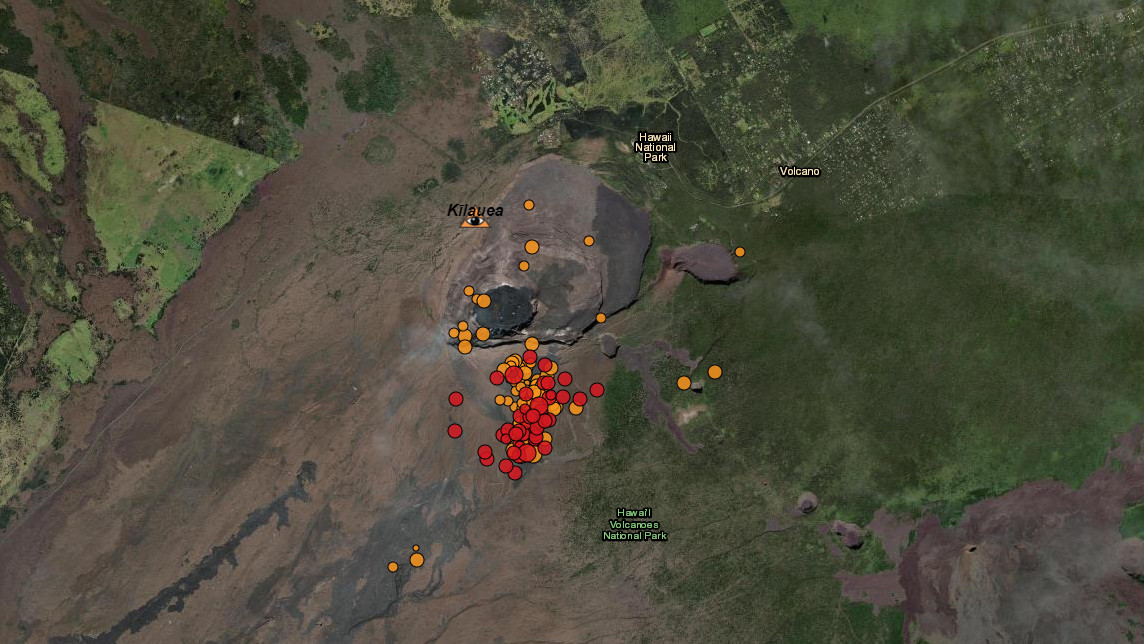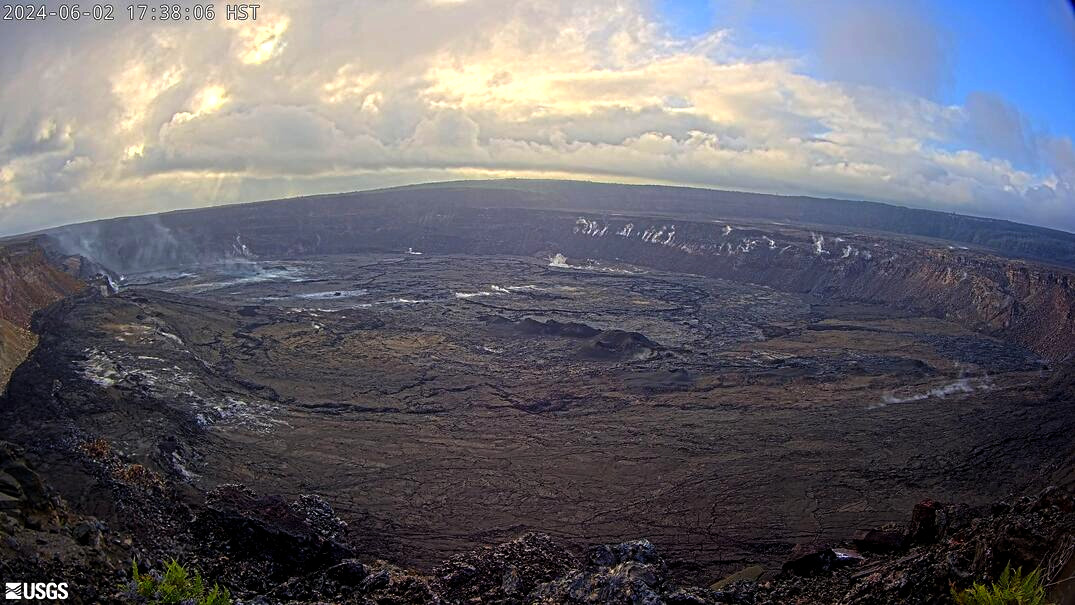
from interactive USGS map showing the location of recent earthquakes, mostly beneath the caldera south of Halemaʻumaʻu, as of early Sunday evening
(BIVN) – Kīlauea is not erupting, however due to the dramatic increase in earthquakes and ground deformation in the summit area that started on Sunday at noon, officials have raised the alert level for the Hawaiʻi island volcano.
The USGS Hawaiian Volcano Observatory at 5:31 p.m. HST raised the Volcano Alert Level for ground-based hazards from ADVISORY to WATCH, and the Aviation Color Code from YELLOW to ORANGE.
UPDATE – (7:15 p.m.) – Hawaiʻi Volcanoes National Park announced the Devastation Parking Lot and the Keanakākoʻi-area are closed due to the seismic unrest.
“Increased earthquake activity and ground deformation at Kīlauea’s summit began at approximately 12:00 p.m. HST on June 2, 2024, indicating the likely movement of magma in the subsurface,” the HVO scientists wrote. “Rates of seismicity and deformation increased further after 5:00 p.m. HST. At this time, it is not possible to say with certainty if this activity will lead to an eruption – the activity may remain below ground. However, an eruption in Kīlauea’s summit region within Hawai‘i Volcanoes National Park is one potential outcome.”
Current activity is restricted to the summit region, scientists say. Rates of seismicity and ground deformation beneath the East Rift Zone and Southwest Rift Zone remain low.
From the HVO/USGS Volcanic Activity Notice issued Sunday evening:
Kīlauea summit eruptive activity over the past several years has occurred at the base of Halemaʻumaʻu crater and on the downdropped block, within the closed area of Hawaiʻi Volcanoes National Park. During Kīlauea summit eruptions, the high level of volcanic gas—primarily water vapor (H2O), carbon dioxide (CO2), and sulfur dioxide (SO2)—being emitted is the primary hazard of concern, as this hazard can have far-reaching effects downwind. Passive volcanic degassing can occur from within Halemaʻumaʻu crater even during periods of no eruptive activity. As SO2 is released from the summit, it reacts in the atmosphere to create the visible haze known as vog (volcanic smog) that has been observed downwind of Kīlauea. Vog creates the potential for airborne health hazards to residents and visitors, damages agricultural crops and other plants, and affects livestock.
The Hawaiian Volcano Observatory, the National Park Service, and Hawaiʻi County emergency officials are monitoring the situation.


by Big Island Video News6:02 pm
on at
STORY SUMMARY
HAWAIʻI VOLCANOES NATIONAL PARK - Increased earthquake activity and ground deformation at Kīlauea’s summit is indicating the likely movement of magma in the subsurface.